Richard Pettibone Marcel Duchamp 'Bicycle Wheel', 1913-1964 signed, titled and dated ""Marcel Duchamp, ‘Bicycle Wheel’, 1913-1964" #1 Richard Pettibone 2001" on the reverse oil on canvas, in artist's frame 11 1/4 x 7 3/4 in. (28.7 x 19.7 cm.) Painted in 2001.
Provenance Leo Castelli Gallery, New York Curt Marcus Gallery, New York Private Collection The Page Gallery, Seoul Acquired from the above by the present owner Catalogue Essay In 1962, Richard Pettibone attended Andy Warhol’s first show of paintings at the Ferus Gallery, hosted in his own hometown of Los Angeles. A year later, Pettibone visited Pasadena where Marcel Duchamp’s major 1963 retrospective was on view. Together, these two shows inspired Pettibone to jumpstart his own artistic career, influenced by the different, yet undoubtedly similar values present in the works of these two artists. After impressing both Warhol and the Pop master’s gallerist Leo Castelli with his early paintings on a visit to New York in 1965, Pettibone returned to Los Angeles and immediately received an offer from the director of Ferus Gallery, Irving Blum, for his first solo show. The following selection of works date from the very beginning of Pettibone’s prolific career up until recent years, thus spanning four decades of his oeuvre. The earliest of these from 1963 is titled Le petit blanc, created just before the artist’s first foray into the 1960s art scene. Named for the French table wine label pressed to the inside of the glass, this work showcases the artist’s meticulous talent in three-dimensional assemblage, his first preferred medium. In fact, the train on display inside the shadow box is directly influenced by Pettibone’s interest in model making, specifically of toy trains and automobiles. These early assemblages illustrate an appreciation for the miniature that would continue to be seen throughout the entirety of the artist’s career. As such, Le petit blanc is a rare example of Pettibone’s early craftsmanship, which was just a few years later replaced by the appropriations he has come to be known for. Four works completed between 1965 to 1969 are stellar examples of the earliest of Pettibone’s appropriations, paying homage to the artists he was particularly inspired by including Duchamp and Jasper Johns The two early Duchamp works, Marcel Duchamp “Belle Haleine: Eau de Voilette”, 1921 (violet) and Duchamp Profile, each measure under six inches in height, reducing the Duchampian readymade and recognizable imagery to an even more houseable scale. In the group of Pop artists for whom Pettibone was drawn to, Duchamp may stand out as an outlier, yet he remains even today one of the artist’s most revered muses. As the artist has recently said, “my response to Duchamp hasn’t changed at all in the last 34 years. His work is just as beautiful…in spite of all that talk about chance and giving up taste etc. Duchamp’s work is still drop dead gorgeous” (Richard Pettibone quoted in Francis M. Naumann, “Appropriating Duchamp, Appropriately” in Richard Pettibone A Retrospective, exh. cat., The Frances Young Tang Teaching Museum and Art Gallery at Skidmore College, Saratoga Springs, 2005, p. 23). Indeed, Pettibone would later revisit Duchamp’s oeuvre, as exemplified by his work Marcel Duchamp “Bicycle Wheel”, 1913-1964 #1 from 2001, the most recent of the present selection. This work, too, shrinks one of Duchamp’s readymades to a smaller scale, meticulously hand-painted in oil on canvas. It is this tiny scale that is perhaps the most defining characteristic of Pettibone’s masterworks. When first appropriating the paintings of Warhol and Johns in the 1960s, Pettibone obtained his source imagery not from the physical works themselves, but from illustrations of the works in early issues of ArtForum, thus matching the images’ scales in flat, printed form. In appropriating the pictures this way, Pettibone makes, as he continues to do, a statement on the different formats in which art is conveyed to the public. As Michael Duncan aptly explained, “by reducing such subjects back to more or less their original diminutive sizes, Pettibone emulated how photography and vision itself shrinks the world into digestible images…His works make us see that all ar
Richard Pettibone Marcel Duchamp 'Bicycle Wheel', 1913-1964 signed, titled and dated ""Marcel Duchamp, ‘Bicycle Wheel’, 1913-1964" #1 Richard Pettibone 2001" on the reverse oil on canvas, in artist's frame 11 1/4 x 7 3/4 in. (28.7 x 19.7 cm.) Painted in 2001.
Provenance Leo Castelli Gallery, New York Curt Marcus Gallery, New York Private Collection The Page Gallery, Seoul Acquired from the above by the present owner Catalogue Essay In 1962, Richard Pettibone attended Andy Warhol’s first show of paintings at the Ferus Gallery, hosted in his own hometown of Los Angeles. A year later, Pettibone visited Pasadena where Marcel Duchamp’s major 1963 retrospective was on view. Together, these two shows inspired Pettibone to jumpstart his own artistic career, influenced by the different, yet undoubtedly similar values present in the works of these two artists. After impressing both Warhol and the Pop master’s gallerist Leo Castelli with his early paintings on a visit to New York in 1965, Pettibone returned to Los Angeles and immediately received an offer from the director of Ferus Gallery, Irving Blum, for his first solo show. The following selection of works date from the very beginning of Pettibone’s prolific career up until recent years, thus spanning four decades of his oeuvre. The earliest of these from 1963 is titled Le petit blanc, created just before the artist’s first foray into the 1960s art scene. Named for the French table wine label pressed to the inside of the glass, this work showcases the artist’s meticulous talent in three-dimensional assemblage, his first preferred medium. In fact, the train on display inside the shadow box is directly influenced by Pettibone’s interest in model making, specifically of toy trains and automobiles. These early assemblages illustrate an appreciation for the miniature that would continue to be seen throughout the entirety of the artist’s career. As such, Le petit blanc is a rare example of Pettibone’s early craftsmanship, which was just a few years later replaced by the appropriations he has come to be known for. Four works completed between 1965 to 1969 are stellar examples of the earliest of Pettibone’s appropriations, paying homage to the artists he was particularly inspired by including Duchamp and Jasper Johns The two early Duchamp works, Marcel Duchamp “Belle Haleine: Eau de Voilette”, 1921 (violet) and Duchamp Profile, each measure under six inches in height, reducing the Duchampian readymade and recognizable imagery to an even more houseable scale. In the group of Pop artists for whom Pettibone was drawn to, Duchamp may stand out as an outlier, yet he remains even today one of the artist’s most revered muses. As the artist has recently said, “my response to Duchamp hasn’t changed at all in the last 34 years. His work is just as beautiful…in spite of all that talk about chance and giving up taste etc. Duchamp’s work is still drop dead gorgeous” (Richard Pettibone quoted in Francis M. Naumann, “Appropriating Duchamp, Appropriately” in Richard Pettibone A Retrospective, exh. cat., The Frances Young Tang Teaching Museum and Art Gallery at Skidmore College, Saratoga Springs, 2005, p. 23). Indeed, Pettibone would later revisit Duchamp’s oeuvre, as exemplified by his work Marcel Duchamp “Bicycle Wheel”, 1913-1964 #1 from 2001, the most recent of the present selection. This work, too, shrinks one of Duchamp’s readymades to a smaller scale, meticulously hand-painted in oil on canvas. It is this tiny scale that is perhaps the most defining characteristic of Pettibone’s masterworks. When first appropriating the paintings of Warhol and Johns in the 1960s, Pettibone obtained his source imagery not from the physical works themselves, but from illustrations of the works in early issues of ArtForum, thus matching the images’ scales in flat, printed form. In appropriating the pictures this way, Pettibone makes, as he continues to do, a statement on the different formats in which art is conveyed to the public. As Michael Duncan aptly explained, “by reducing such subjects back to more or less their original diminutive sizes, Pettibone emulated how photography and vision itself shrinks the world into digestible images…His works make us see that all ar

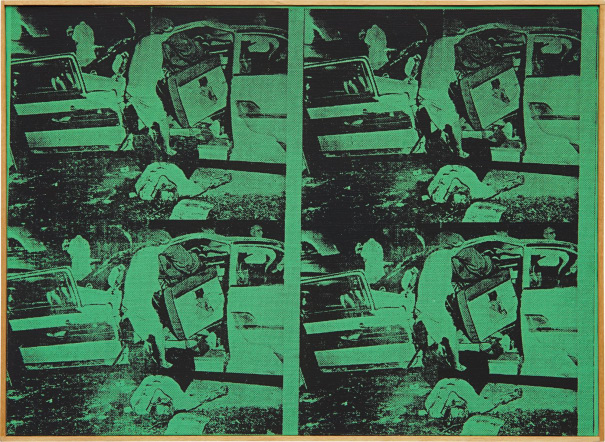

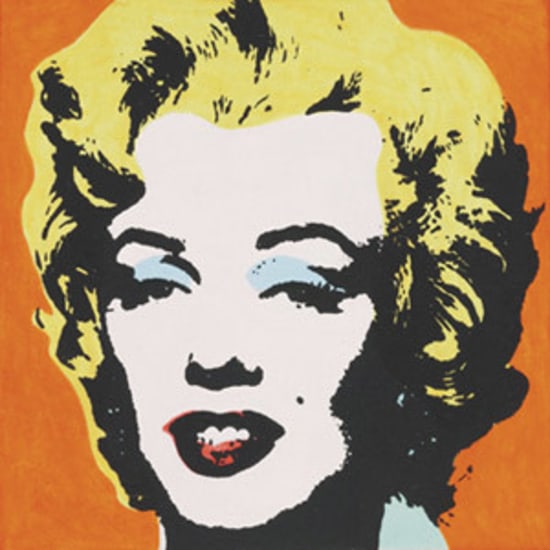



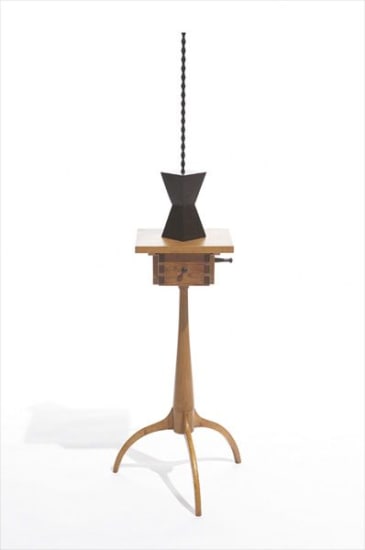

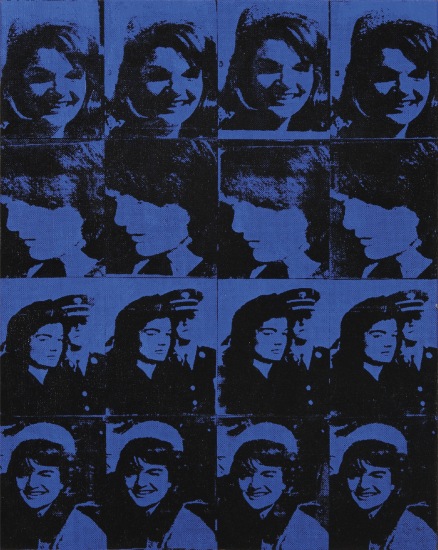
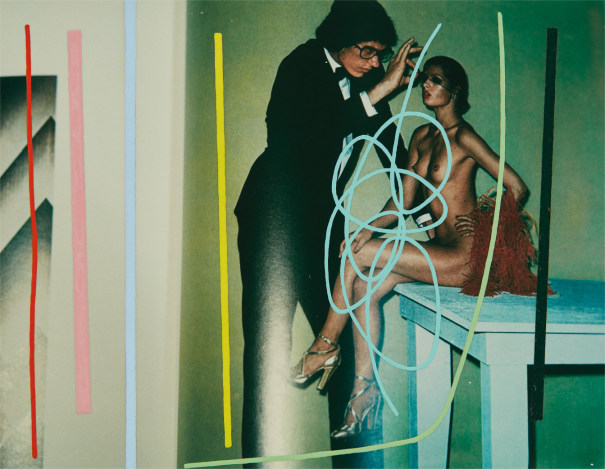



Try LotSearch and its premium features for 7 days - without any costs!
Be notified automatically about new items in upcoming auctions.
Create an alert